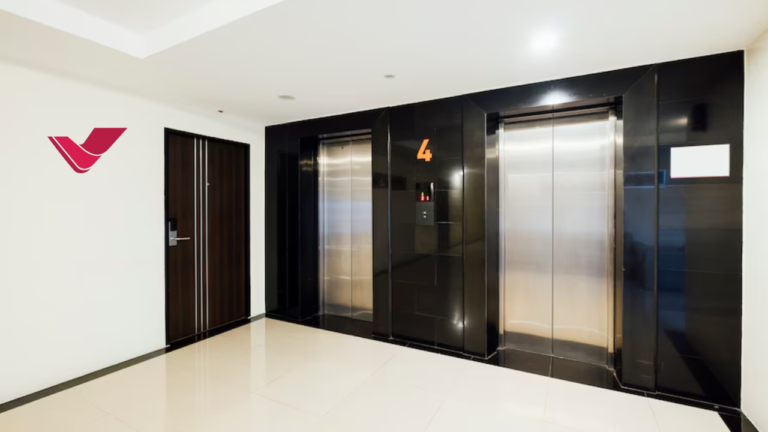Introduction
Elevators are complex systems that rely on harmonized components to ensure safe and efficient operation. Understanding the different lift parts’ functions is crucial for maintaining and troubleshooting these systems. This comprehensive guide aims to educate readers on the various lift parts, their maintenance, and replacement to ensure the smooth operation of elevators.
Understanding Lift Parts
How Lift Parts Work in an Elevator System
Lift parts are integral to the functionality of an elevator system. Each component plays a vital role, from the motor and gearbox to the control system parts. The elevator shaft components, including the safety brakes and buffers, ensure the elevator moves smoothly and stops safely. Electrical wiring for lifts is another critical element, providing the necessary power and control signals.
Types of Lift Spare Parts
Different Types of Lift Spare Parts
- Elevator Shaft Components include the rails and guides that ensure the elevator car moves smoothly within the shaft.
- Motor and Gearbox: The heart of the elevator, providing the necessary power to move the elevator car.
- Electrical Wiring for Lifts: Critical for power distribution and control signals.
- Safety Brakes and Buffers: Ensure the elevator can stop safely and comfortably.
- Control System Parts: Include the control panel, sensors, and other electronic components that manage the elevator’s operation.
Maintenance of Lift Parts
Step-by-Step Maintenance Guide for Lift Spare Parts
Maintaining lift parts is crucial for safety and longevity. Here are some best practices:
- Regular Inspection: Conduct regular inspections to identify wear and tear early.
- Lubrication: Ensure moving parts are properly lubricated to reduce friction and wear.
- Cleaning: Keep all components clean to prevent dust and debris from causing malfunctions.
- Testing: Regularly test safety systems such as brakes and buffers to ensure they function correctly.
Best Practices for Storing Lift Spare Parts
Proper storage of lift spare parts can extend their lifespan and ensure they are ready for use when needed:
- Environment: Store parts in a clean, dry environment to prevent rust and corrosion.
- Organization: Keep parts organized and labeled for easy access.
- Protection: Protective covers and packaging shield parts from dust and damage.
Lifespan and Replacement of Lift Parts
How Often Should Lift Parts Be Replaced?
The lifespan of lift parts can vary based on usage and maintenance. Here are some general guidelines:
- Motor and Gearbox: Typically last around 10-15 years with proper maintenance.
- Safety Brakes: Should be inspected and possibly replaced every 5-10 years.
- Electrical Wiring: Inspect regularly and replace any damaged wires immediately.
Signs That Lift Spare Parts Need Replacement
- Unusual Noises: Grinding or squealing sounds can indicate worn-out parts.
- Slow Operation: If the elevator operates slower than usual, it may be time to replace some components.
- Frequent Breakdowns: Repeated malfunctions indicate that parts need to be replaced.
Upgrading and Installing Lift Parts
How to Choose the Right Lift Parts for Your Elevator
Choosing the right lift parts is essential for optimal performance. Consider the following factors:
- Compatibility: Ensure that the parts are compatible with your specific elevator model.
- Quality: Opt for high-quality parts from reputable manufacturers.
- Specifications: Check the specifications to match the requirements of your elevator system.
How to Install Lift Spare Parts
Installing lift spare parts requires precision and expertise. Here are some general steps:
- Preparation: Gather all necessary tools and safety equipment.
- Disassembly: Carefully disassemble the parts that need replacement.
- Installation: Install the new parts, ensuring they are securely fitted.
- Testing: Test the elevator thoroughly to ensure the new parts function correctly.
Common Problems and Troubleshooting
Identifying Common Problems with Elevator Components
- Jerky Movements: These can be caused by worn-out guides or rails.
- Stuck Doors: Often a result of faulty door sensors or control systems.
- Electrical Issues: This can cause the elevator to stop unexpectedly or operate erratically.
Lift Parts Troubleshooting Guide
- Check the Control Panel: Ensure all control systems are correctly calibrated.
- Inspect Safety Systems: Ensure safety brakes and buffers are in good condition.
- Examine Electrical Wiring: Look for any signs of damage or loose connections.
FAQs
- How do lift parts work in an elevator system? Lift parts work together to ensure the smooth and safe operation of the elevator. Key components include the motor, gearbox, and control system parts.
- What are the different types of lift spare parts? Key types include elevator shaft components, motor and gearbox, electrical wiring, safety brakes, and control system parts.
- How often should lift parts be replaced? Replacement frequency depends on usage and maintenance but ranges from 5 to 15 years.
- What are the signs that lift spare parts need replacement? Signs include unusual noises, slow operation, and frequent breakdowns.
Conclusion
Regular maintenance and timely replacement of lift parts are essential for ensuring the safety and efficiency of elevator systems. By following the guidelines in this comprehensive guide, you can maintain your elevator in top condition and prevent costly repairs.
Read More: Kross Ermias Asghedom: A Rising Star in the Shadow of Legacy.


